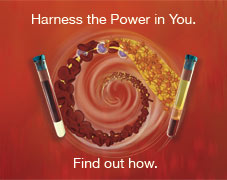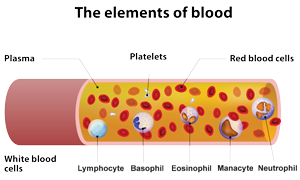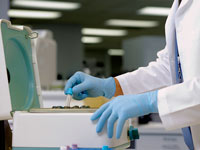Platelet Rich Plasma (PRP)
Platelet rich plasma (abbreviated PRP) is a new treatment used for some common orthopedic conditions. PRP is a concentration of platelet cells taken from your blood, and these platelets have growth factors that may help in the healing process of chronic injuries. Growth factors are chemicals that signal the body to initiate a healing response. By injecting PRP into areas of an injury, the hope is to stimulate and optimize your body's ability to heal the chronic conditions.

Platelet Rich Plasma (PRP) Therapy
Even though PRP has received extensive publicity, there are still lingering questions about it, such as:
- What is PRP Therapy?
- How does it work?
- What conditions are being treated with PRP?
- When can I expect to see improvement?
- What is the success rate?
What is PRP Therapy?
PRP Therapy is a non-surgical approach to pain relief that uses your body’s own growth factors to stimulate healing. Following a soft tissue injury, the body naturally delivers platelet cells containing growth factors to respond to the damage. PRP therapy intensifies that effort. It involves collecting your own blood, which is placed in a centrifuge to separate the platelet rich plasma from the other components of your whole blood.
What Conditions Benefit From PRP?
PRP has been used in operating rooms for several decades to help with wound healing, and to stimulate bone formation in spinal fusion surgery. PRP treatment works best for chronic ligament and tendon sprains/strains that have failed other conservative treatment, including:

- Achilles Tendonitis & Plantar Fasciitis
- Rotator Cuff Injuries, including Partial-Thickness and Full-Thickness Tears
- Shoulder Pain & Instability
- Tennis & Golfer’s Elbow
- Hamstring and Hip Pain
- Knee Sprains and Instability
- Patellofemoral Syndrome and Patellar Tendonitis
- Ankle Sprains
- Knee, Hip, and Other Joint Osteoarthritis
- Sports Hernias & Athletic Pubalgia
- Other Chronic Tendon and Ligament Problems
- Nerve Entrapment Syndromes, such as Carpal Tunnel Syndrome
In addition, PRP can be very helpful for many cases of osteoarthritis (the “wear & tear” kind). PRP can help stimulate a “smoothing over” of the roughened and arthritic cartilage, reducing the pain and disability of arthritis. This includes:
- Knee Arthritis
- Hip Joint Arthritis
- Shoulder Arthritis
- Other Joint Arthritis
How PRP Is Obtained:

PRP is obtained from the patient. Blood is withdrawn from a vein in the patient’s arm and the blood is placed in a centrifuge, a machine that spins at a high speed to separate the different types of blood cells. The physician extracts the platelet-rich portion of the blood, and injects this into the area of injury.
How PRP Is Injected:
PRP injections are given as soon as the blood has been spun and the platelets separated. Some physicians may choose to add an "activating agent," usually either thrombin or calcium chloride, while some inject just the platelets. Studies have shown that the tendons being injected can also activate the PRP, so the activating agent may not be necessary.
There is no clear science to justify a particular quantity of PRP and number of injections needed. Most physicians perform one injection, although sometimes PRP injections are given as a series of injections over a span of several weeks.
When Can I Expect to See Improvement?
On average, most patients start to see signs of improvement anywhere from 4-8 weeks after treatment. This can be less overall pain, an ability to do more activity before pain sets in, and/or faster recovery from pain.
What is the Success Rate?
Studies suggest an improvement of 80-85%, though some arthritic joints, namely the hip, do not respond as well. Some patients experience complete relief of their pain. In the case of tendon and ligament injuries the results are generally permanent. In the case of joint arthritis, how long the treatment lasts depends partly on the severity of the condition.
Mild arthritis may not need another round of treatments. More advanced arthritis, on the other hand, typically requires a repeat course of treatment, usually in 1–3 years.
Is PRP Covered by Insurance?
Most insurance plans, including Medicare, do NOT pay for PRP injections.
What Does PRP Treatment Cost?
At Valley Sports Physicians the cost of PRP treatment is based on the level of complexity involved in treating a given area(s). Prices range from $700 to $1100 per treatment. If two joints or areas are treated at the same time, the cost is NOT double—there is a slight increase.
If You Want PRP:
PRP injections can be done in Dr. Stewart’s office. The procedure takes about 30 minutes in order to withdraw the blood, spin the blood in the centrifuge, and inject the PRP into the injured area.